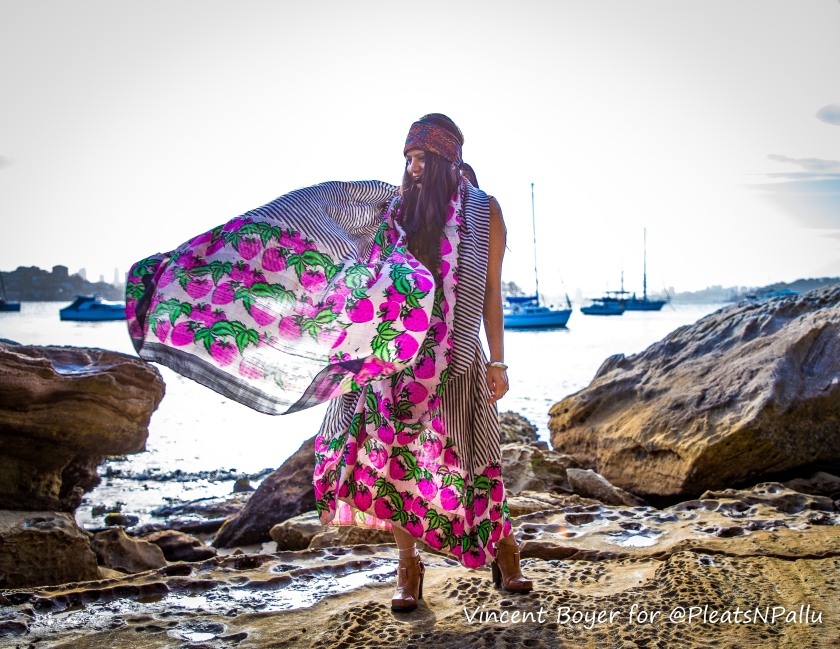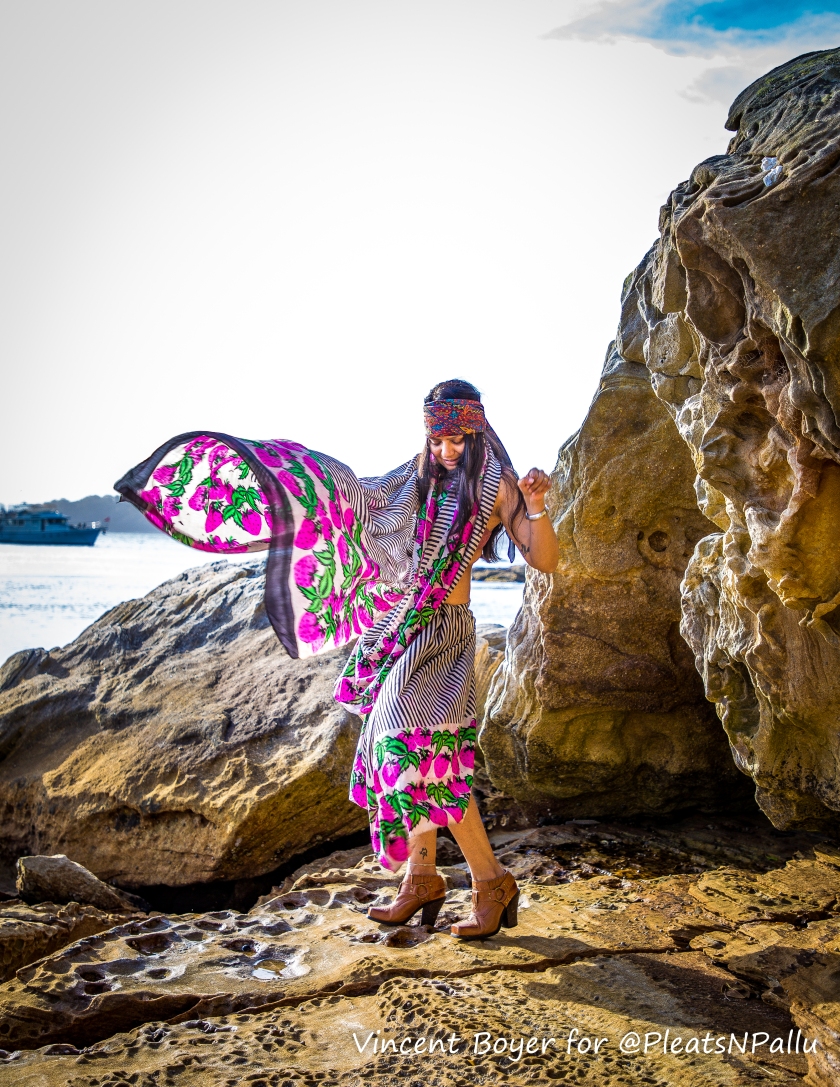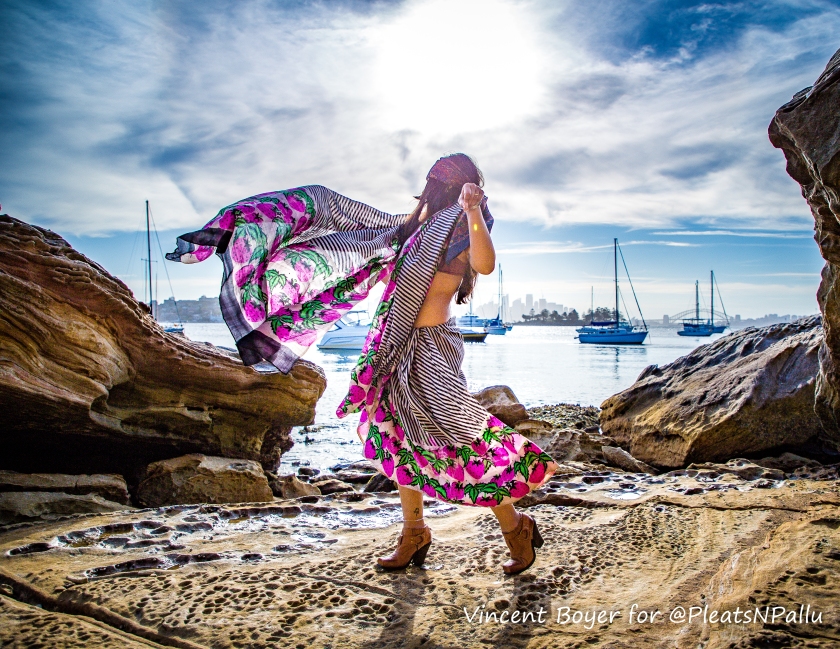As the warmer weather approaches my drapes get more casual for relaxing afternoons by the water and vintage silk sarees at the beach become the norm …



Photos: Vincent Boyer (Say hi on instagram @vincetravelbook)
I have a massive obsession with vintage silk in any form, sarees, scarves, dresses, kurtas, tops, bottoms, you name it and I am sure to love it.
I prefer older silks because more often than not they soften with wear and were made at a time when the water used in the production process was far less polluted than it is today – which is one of the reasons I feel that they keep the vibrancy and depth of their colours far better than their modern counterparts.
In the late 1960s, long before ‘Ritu Kumar’ the brand, there was just Ritu’s Boutique on Wellesley Street in Calcutta, with the most sumptuous hand block printed silk sarees like this vintage piece bought over forty years ago.
Family albums from the 1970s show my Mother wearing these sarees, in different locations of the world while sailing with my Dad. One of the best parts about this saree? What looks like a hand written signature at the corner simply stating Ritu’s Boutique.
I am always attracted to older more worn-in pieces over newer/trendier items and love to make them my own by wearing them in ways that suit my life and activities.
I’d rather have a perfectly (or imperfectly) preserved one-of-a-kind vintage piece over anything that a seller (or influencer) touts as a present-day must-have. The scarf I am wearing in my hair is also a vintage silk made in India in the 1970s.
Acquiring vintage pieces is easier than caring for them and preserving them over a period of time. Here are some of the rules that I follow when storing my delicate hand crafted clothing:
- I believe sarees and other vintage fabrics should be stored clean, so I always wash or wipe them down before storing them for an extended amount of time. Dust particles over time can actually cut fibers through friction and abrasion.
- The greatest danger to all textiles is super bright light, both artificial and ultraviolet (daylight). Over time, light causes fading in the colors of the fibers, eventually damaging the fibers themselves.
- For long-term storage, I prefer a spot that is dry, cool with even temperature and clean air with good circulation. An environment comfortable for me is suitable for my vintage textiles, I avoid using trunks or boxes in hot or damp areas like attics or basements or garages.
- I avoid mildew and moths by keeping textiles and their storage places perfectly clean, dry, cool, and regularly aired and consistently inspected.
- I remove my precious fabrics from storage periodically and air them as well as wear them around the house if need be. If a saree has been folded, I take care to refold it and change the position of the folds so that the same fibers are not subjected to the tension of folding, which can cause breakage over a long period of time.
- I avoid storing my vintage pieces in plastic or non-woven garment bags as they can cause irreparable damage.
- To preserve and protect the integrity of my vintage pieces I prefer pure cotton or muslin bags, they are the natural and safest alternative to the damaging plastic and non-woven garment bags.
- When I run out of garment bags to store them in, I just wrap my each of my delicate sarees in a different worn-in cotton t-shirts to prevent creasing.
- I take a lot of care when I handle delicate textiles, I wash and dry my hands to not transfer grease, make-up or food stains from my hands to clothing.
- I use lavender sachets to keep away pests and creepy crawlies. However, I ensure it is near but not touching my vintage clothing.
If you are interested I have previously written a post about my do’s and don’ts for cleaning and maintaining sarees at home. Older posts wearing handloom sarees at the beach are here and here.
I am sure there are many more tips, tricks and methods out there that are kind to the environment while helping us preserve textiles, please feel free to leave your suggestions in the comments.